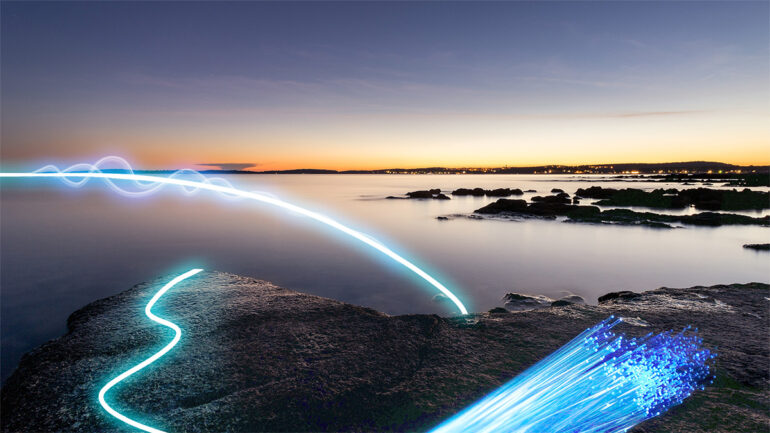Scientists have harnessed Internet-transmitting fiber-optic cables to overcome a long-standing geophysical challenge: identifying where seismic noise in the ocean originates. Tiny vibrations of Earth called microseisms are ubiquitous, yet researchers have not had a way to pinpoint their sources in the sea. An innovative use of telecommunications equipment has changed that.
In the research now published in Geophysical Research Letters, Xiao et al. sent laser pulses through a commercially operated fiber-optic cable linking Valencia, Spain, to Palma on the Mediterranean island of Mallorca. The researchers then measured the small amount of light that bounced back through the cable, a technique called distributed acoustic sensing (DAS). When seismic vibrations disturbed the cable, they changed how the light returned to the source and let the researchers identify the origins of microseisms.
The researchers found that the microvibrations emanated from source regions between a few kilometers and about 10 kilometers across, but this source region migrated within a band between 7 and 27 kilometers from the coast, where the ocean was between 25 and 100 meters deep. Where the vibrations were strongest was not always near the source of the microseisms, however. Sometimes they were strongest in areas closer to or farther from shore.
The researchers hypothesize that this constantly shifting behavior is possible because wave-wave interactions at the sea surface are what cause microseisms, and the variable nature of local winds means that wave action also shifts.
Meanwhile, properties of the underwater environment such as depth, seafloor slope, and the seismic velocity of the subsurface structure might also influence microseisms, perhaps explaining why they were not always strongest near the source and suggesting that excitation of microseisms likely differs depending on bathymetry. The authors say their results reveal the potential of DAS for understanding microseism activity.
More information:
Han Xiao et al, Locating the Precise Sources of High‐Frequency Microseisms Using Distributed Acoustic Sensing, Geophysical Research Letters (2022). DOI: 10.1029/2022GL099292
Provided by
American Geophysical Union
This story is republished courtesy of Eos, hosted by the American Geophysical Union. Read the original story here.
Citation:
Internet cable reveals the source of underwater vibrations (2022, October 3)
